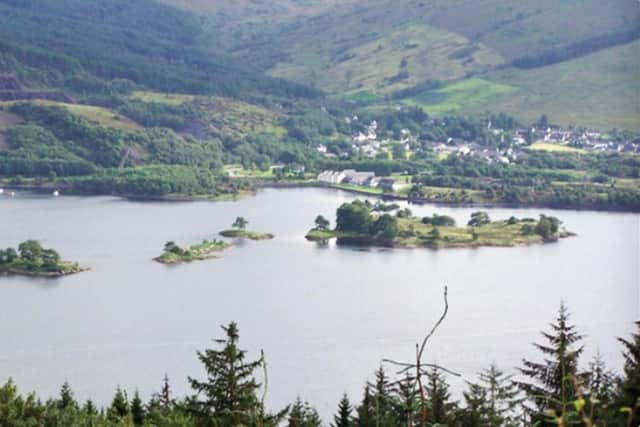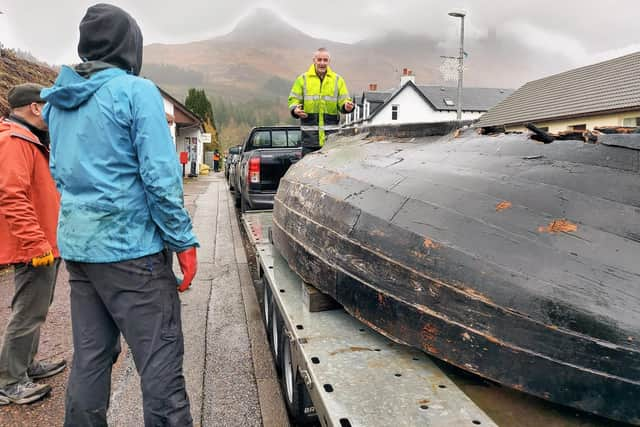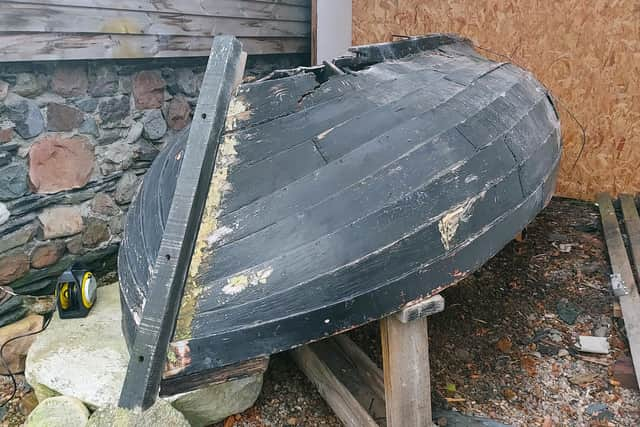Clan funeral boat that ferried kin to Scottish island resting place lives on
A funeral boat that was used by Highland clans to transport their kin to their final resting place on an island near Glencoe is to be saved.
The vessel, which was likely built in the late 19th century, was one of three rowing boats used by several clans to ferry their dead to Eilean Munde in Loch Leven
Advertisement
Hide AdAdvertisement
Hide AdAmong the MacDonalds said to be buried there is MacIain, 12th Chief of Glencoe, who was murdered during the infamous massacre of 1692. Now one of the key exhibits at the Glencoe Folk Museum, the fragile boat is on its way to be restored in the north of England.


David Rounce, project director at the museum, said: “The funeral boat is our largest object and provides a tangible link with an important local custom, telling an evocative story of clan traditions, social history and local folklore. This work will protect the boat for future generations and it’ll be fantastic to see it on display in our redeveloped museum. We’d also like to thank the local Munda’s Men group for their efforts in loading the boat ready for transport.”
The funeral boat will be repaired at Windermere Jetty Museum by Stephen Beresford, one of the UK’s leading historic boat conservators.
The work is being carried out by public donations and grants from the Association of Independent Museums, Ballew Foundation and National Lottery Heritage Fund.


Mr Beresford, said: “‘It’s an honour and a privilege to work on a boat with such significance, that matters so much to the people of the Highlands. Its form and construction are inextricably linked to its purpose and the stories these features can unfold are quite fascinating.”
Once repaired and conserved, the boat will return to the Highlands to take centre stage at the new-look museum, which will reopen in summer 2025.
The MacDonalds of Glencoe were buried on Eilean Munde alongside the Camerons of Callart and the Stewarts of Ballachulish and Ardsheal. Even when they were at conflict with each other, Eilean Munde remained a place of peace, with the clans sharing the maintenance of the site.


Different clans had different ports on the island where they arrived with bodies – and sometimes soil – for burials.
Advertisement
Hide AdAdvertisement
Hide AdChristina MacDonald Sharp, who was born in Glencoe and moved to London as a young woman, was the last person to be buried there in 1972.
No more burials are allowed on the island given the lack of soil that can be found there, although the ashes of loved ones as sometimes scattered at the site.
The island takes its name from St Munda, a contemporary of St Columba, who built his chapel in the seventh sentury. The last service was held in 1653.
There are at least 300 graves on the Eilean Munde, with Big Duncan MacKenzie another fabled figure buried there. The Jacobite fighter from Ballachulish fought alongside Cameron of Lochiel at Battle of Prestonpans in September 1745 and is remembered for slicing through the helmet and head of a British Government dragoon.
Ros MacDonald, secretary of Glencoe Heritage Trust, earlier recorded all the visible graves on Eilean Munde along with her son, Alexander, who later wrote a book on the island’s past.
Comments
Want to join the conversation? Please or to comment on this article.